




Southwest Louisiana was ravaged by four consecutive federally declared major disasters in 10 months in 2020 and 2021. The region emerged with a united resolve to rebuild a stronger, more resilient, and vibrant community. This is the story of Just Imagine SWLA.


Hurricane Laura made landfall in Cameron Parish on August 27, 2020 as a Category 4 hurricane. With sustained wind speeds of 150 miles per hour, it tied as the strongest hurricane on record to hit Louisiana. Calcasieu and Cameron Parishes experienced up to nine feet of storm surge and extreme winds, which caused catastrophic damage to homes, commercial buildings, utilities, mature trees, and critical facilities.
With the region struggling to recover from Hurricane Laura, Hurricane Delta made landfall in Cameron Parish on October 9, 2020, just nine miles east of where Hurricane Laura hit only six weeks earlier. Southwest Louisiana was already in a state of emergency, with the majority of people displaced and thousands of homes with tarped roofs. Tarps and debris from Laura were blown away, and homes were destroyed by rainfall and flooding.

In February 2021, Calcasieu and Cameron parishes were impacted by the uncharacteristic winter storms that affected many southern states. SWLA experienced frozen power lines, burst water pipes, and iced roads. This caused leaks in the water distribution system, resulting in low or no water pressure in the City of Lake Charles. The significant number of vacant homes and buildings exacerbated the problem.


On May 17, 2021, severe storms and tornados caused flash flooding, with more than 12 inches of rainfall impacting Calcasieu Parish. Quickly rising waters enveloped cars and made roads and neighborhoods unsafe. Over half the roads were under some water. The storm marked the third most rainfall in a single day in Lake Charles’s history — more than fell during either Hurricanes Laura or Delta.
Together, these disasters devastated the region and traumatized residents and business owners of Southwest Louisiana. They emphasized the need to rebuild more resiliently to bolster the region against future storms.


Immediately following the storms, the people of Southwest Louisiana banded together to help one another through the immediate challenges ahead. Meanwhile, the parishes and municipalities made progress on emergency response and short-term recovery efforts, including debris removal, temporary housing provision, power and water restoration, and other life and safety measures.
While these efforts were underway, the Calcasieu Parish Police Jury and hundreds of stakeholders collaborated to develop the Calcasieu Parish Hurricanes Laura and Delta Long-Term Community Recovery Plan, adopted in August 2021. The Long-Term Recovery Plan recommended the creation of a Community Resilience Master Plan to ensure the recovery efforts would be guided by a comprehensive vision for the broader region in the next 30 to 50 years.
Recognizing the pressing need to build a resilient home for his hometown region, Moss Bluff native and Yahoo! co-founder David Filo and his wife Angela made a generous donation of $2.5 million to the Community Foundation Southwest Louisiana. The Community Foundation engaged public and private stakeholders across Calcasieu and Cameron parishes in a listening tour to set the priorities for the Master Plan process. This input was used to form the national search for a consultant team to lead the once-in-a-generation process.
What distinguishes the Just Imagine SWLA process is the extent of the regional collaboration — two parishes, five cities, two towns, federal and state agencies, public authorities, school boards, elected officials, private industry, utility providers, universities and colleges, professional and civic organizations, non-profits, and everyday citizens came together to develop a shared vision for Southwest Louisiana. The plan focuses on Calcasieu and Cameron Parishes, which were the
most impacted, but the recommendations apply to the five-parish region.
The vision balances long-term aspirations for the region, looking 50 years into the future, with the need to demonstrate early investment to convince former and future residents and businesses to return.

The public, private, and non-profit sectors, along with community stakeholders and individuals participating in the process, skillfully balanced these objectives. Consensus grew around a central theme — make Calcasieu and Cameron parishes great places to live for existing residents, and you will continue to attract new residents, employers, employees, and investment that will lift up the whole region. Improving access to the region’s beautiful natural amenities, expanding entertainment and cultural experiences, providing housing that individuals and families can afford, and investing in resilient infrastructure will strengthen the SWLA economy and prepare the region for the next 50 years.


The Just Imagine SWLA process engaged a region of over 200,000 people, many of whom were relocated or dealing with the stressful process of repairing their homes, fighting insurance claims, and managing contractors. Despite their personal situations, citizens gave freely of their time and passionately engaged in Just Imagine, a testament to their love for Southwest Louisiana.
Just Imagine SWLA followed a three-step process — Understanding, Testing, and Deciding. Throughout this three-step process, over 2,500 people participated. The process layered in-person, virtual, and text-based tools to reach the widest number of stakeholders and citizens possible. The engagement team established an Advisory Committee and Guiding Groups centered
around the five plan topics, hosted in-person public workshops, communicated through a project website, and solicited ideas through an online idea wall, interactive maps, surveys, youthspecific surveys, and Hello Lamp Post, a text-based chat platform. Hello Lamp Post signs were placed in everyday places to catch the attention of people who may not have encountered the Just Imagine process elsewhere — grocery stores, school pick-up lines, and festivals. Just Imagine SWLA recruited ambassadors in both parishes to hold smaller versions of workshops at libraries, civic meetings, employer lunch-and-learns, and social settings. In total, over 7,300 comments were shared to guide the process over the ten-month engagement process.
1. People and communities in SWLA are supportive, friendly, and familyoriented


2. Appreciation for beautiful, natural landscapes and waterways
3. People love and use the local parks and green spaces
TOP 3 STRENGTHS
1. Flooding and poor drainage
2. Traffic patterns, congestion, and poor circulation
3. The cost of all housing is going up and many households are being priced out
1. Sidewalks, bike trails, and pedestrian paths in both developed and natural areas

2. More choices for restaurants and food experience
3. Attract entertainment and shopping amenities to the region
TOP 3 PROBLEMS
TOP 3 DREAMS
The vision for Southwest Louisiana is organized around five topics — Collaborative Community Planning, Resilient Housing, Diverse and Strong Economy, Reliable and Resilient Infrastructure, and Natural and Cultural Resources. These topics align with five of the six the FEMA designated Recovery Support Functions (RSF) in the Calcasieu Parish Long-Term Recovery Plan, ensuring continuity between the plans. Just Imagine SWLA expands these five topics to Cameron Parish and the region.
Vision statements for each topic were affirmed by the community, parish and municipal leadership, industry leaders, Guiding Groups, and the Advisory Committee. These visions and goals serve as the benchmark for assuring policies, projects, and plan recommendations achieve the intended impact.
Just Imagine SWLA focuses on implementation. Although the horizon of the plan is 50 years, everyone agreed that change and investment are needed in the short- and mid-term to demonstrate that things are changing. For this reason, the process identified 11 catalytic projects that would be highly visible and could be implemented in the first ten years. Seven projects are location-specific, while the remaining four apply in multiple locations across both parishes and the region.
Collaborative community planning that focuses on implementing a better quality of life.
Resilient housing in attractive neighborhoods that people can afford and access.
A diverse and strong economy that adapts to stresses and provides all residents and businesses with the opportunity to thrive.
Reliable and resilient infrastructure that improves the quality of life and makes the region safer.
A region that fully celebrates and protects its unique natural and cultural resources.

Coastal Risk Reduction
Waterfront Development


Mid-City Neighborhood Transformation






Nellie Lutcher District
McNeese Area Resilience District

A highly visible project that can be funded and implemented in the first 10 years to improve economic growth, infrastructure, and quality of life.
Chennault & SOWELA Area
Resilience District
Strong Downtowns
Community Resilience Hubs
Resilient Housing for SWLA
Strategy for Vacant and Underutilized Land
Bayou Greenbelt

“My vision is to build strong neighborhoods with bike lanes and connected sidewalks.”
The people of Southwest Louisiana desire quality of life improvements above all else — places to shop, dine, and recreate, with sidewalks, bike trails, and pedestrian paths that connect residents to beloved natural resources and destinations.

The Community Planning topic broadly encompasses quality of life, public-private coordination and partnership, city and parish approval processes, and oversight of the region’s quality and outcomes of development.
Collaborative Community Planning recommendations include zoning and regulatory updates necessary to help implement the 11 catalytic projects. This topic also addresses the region’s enhancement of walkability and bikeability by extending sidewalks, trails, and bikeways.
1. Work together to implement a common vision
2. Invest to ensure Calcasieu and Cameron parishes are clean, safe, and beautiful
3. Create a more walkable and bikeable region

4. Make the region attractive to families and youth
5. Make it easy and clear for developers to implement the community’s vision
Collaborative Community Planning:
Nellie Lutcher District Strong DowntownsThe Nellie Lutcher District is located around Enterprise Boulevard and Broad Street. It is currently recognized as a cultural district at the state level and has a variety of eclectic uses and buildings. The area north of Broad was once a key commercial corridor for Black and immigrant communities in Lake Charles.
Enterprise Boulevard can become a new cultural destination district and gateway for economic development along the I-10 corridor. Dining, entertainment, and cultural uses will attract people traveling along I-10 and residents looking for a creative and vibrant district.

Streetscape improvements to make Enterprise Boulevard and Broad Street more welcoming to pedestrians would connect Downtown to the Nellie Lutcher District to North Lake Charles. In the future, additional housing could be built and renovated in adjacent neighborhoods, strengthening the district.
Several projects are already moving forward. The City is constructing the Nellie Lutcher Memorial Park, and the U.S. Economic Development Administration granted $1.6 million in American Rescue Plan funds to build a new Mardi Gras Museum in the district, which could be colocated with Mardi Gras-focused small businesses.
(TOP) Enterprise Boulevard (between I-10 and Broad Street) would be transformed with bike lanes, shade trees, and wider sidewalks.




(BOTTOM) Broad Street would be transformed with wider sidewalks, pedestrian-scale lighting, and on-street parking
HIGH priority 5–10 years
$20 million
An Important Note WHO IS NELLIE LUTCHER?
Nellie Lutcher was an internationally known jazz and blues artist born in Lake Charles. Growing up, Nellie lived along Enterprise Boulevard (now named the “Nellie Lutcher Parkway”) and attended New Sunlight Baptist Church. The church is still in existence and is located within the district on V.E. Washington Avenue.

“The affordability of housing is the most pressing need facing our region, and perhaps even the whole state.”
Quality, resilient, and affordable housing is one of the region’s greatest needs. Housing costs are increasing, and many households are being priced out. If families and individuals can’t find quality housing they can afford, it limits the growth of SWLA. As storms continue to increase in severity, homes will need to be built to higher standards.
Throughout the Just Imagine SWLA process, housing rose to the top of the community’s concerns, from housing costs to resilient construction to the health of existing neighborhoods.


Housing policy impacts the availability, affordability, and accessibility of housing. Just Imagine recommendations related to Resilient Housing include zoning and regulatory updates, strategies for protecting affordability, and strategies to grow the housing pipeline and train trades in resilient building practices.
1. Educate people about the best practices for resilient housing, including retrofitting existing buildings
2. Increase the construction and supply of housing
3. Stabilize and enhance existing neighborhoods
4. Build new resilient housing and neighborhoods
5. Build economically integrated and mixedincome housing to ensure that everyone can afford a quality place to live
Catalytic Projects that Address Resilient Housing:
Resilient Housing for SWLA
Strategy for Vacant and Underutilized Land


The Resilient Housing for SWLA project seeks to expand resilient and affordable housing for the region. One element is a toolkit with practical strategies to help homeowners, builders, and organizations build new homes and retrofit existing homes to be stronger and safer against future storms. There are many resources for builders and homeowners who are building or rebuilding in the region, but they are often long and technical, requiring a high level of understanding about building and retrofitting. The Resilient Housing Toolkit focuses on being accessible, while directing people to more detailed resources to learn more. The toolkit also includes a wider look at regional housing challenges, including strategies to mitigate flood insurance.
Download your copy of the Resilient Housing Toolkit at www.JustImagineSWLA.org.
What’s Wrong with Slab on Grade Foundations?
When a flood happens, water goes around the mound created to protect your home, but then it impacts other homes and future building sites, making them more likely to flood. THE DIRT DOESN’T WORK
When a flood happens, slab on grade foundations can have the ground washed out from under them. This is called undermining and can permanently damage your home.
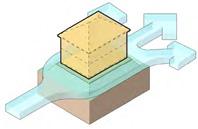
88% YES of respondents said 4% NO of respondents said 8% I’M NOT SURE of respondents said
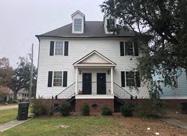

WHAT DOES IT MEAN?
RISK MODELING FEMA has collected data for decades about the risks associated with different types of flooding. They are using that data now to help determine flood insurance costs.

YOUR UNIQUE RISK Risk Rating 2.0 focuses on the unique risks to your home or property. For the first time,
does the building have?
How high is the lowest floor of the building compared to BFE?
• How much would the building cost to replace?


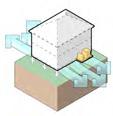


It all comes down to where the building is, how it’s built, and how much it costs to replace.
WHAT DOES IT MEAN?
I think this project will benefit SWLA.
“Enhance and build the sectors that make this region unique — the seafood industry, arts, and quality of life.”
Diversifying job opportunities and economic drivers will help SWLA continue to grow and attract young people and families. There is a positive relationship between increasing the quality of life for residents of the region, attracting new residents and businesses, and increasing tax revenue. The service sector is driving population growth in other states, and service industries can play the same role in SWLA. A more robust service industry would expand tourism offerings and support restaurants and small businesses with employees.
Economic development and growth is the ultimate objective for Just Imagine SWLA. Economic development policies and actions will be necessary to maximize Southwest Louisiana’s future growth. These policy recommendations include enhancements to Downtown Lake Charles, Westlake, and other waterfront areas, I-10 corridor improvements, eco-tourism in Cameron Parish, and strategies for economic diversification.
Economic Development Goals
1. Maintain the strong economic sectors in Calcasieu and Cameron parishes
2. Diversify the economy and make it more resilient by expanding to new sectors
3. Build a resilient workforce development pipeline
4. Enhance destinations and connections to amenities that will encourage people to visit Calcasieu and Cameron parishes and support local businesses

Catalytic Projects that Address
Diverse and Strong Economy:
Waterfront Development


McNeese Area
Resilience District
Chennault & SOWELA Area
Resilience District
The region’s waterfronts are an untapped asset for quality of life and economic development. Exciting new projects like the Port Wonder Children’s Museum and Nature Center, Lake Area Adventures, and a new Crying Eagle Brewery restaurant will activate the Lake Charles lakefront. The City of Lake Charles’s economic incentives help to make future investments attractive. Making a transformative public investment in a continuous, public edge from the Lake Charles Civic Center, across the new I-10 bridge to Westlake, would connect over 5 miles of pedestrian promenades with vibrant restaurants, recreation, and entertainment, activating the waterfront. A strong and activated waterfront can help contribute to additional organic growth along the I-10 corridor and North Lake Charles. While these signature projects move forward, there are also opportunities for waterfront development in Cameron and along smaller waterways.

I think this project will benefit SWLA.
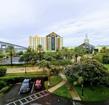
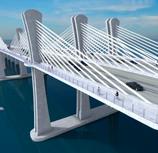


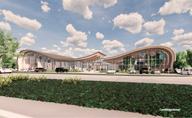


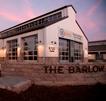


97% YES of respondents said
3% NO of respondents said
1% I’M NOT SURE of respondents said
HIGH priority 5–10 years $350 million
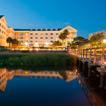
“The roads and bridges need help — we should feel like we can safely move through our community.”
Infrastructure was identified as the most pressing problem for the region to address — drainage, inadequate road conditions, missing road connections, and outdated utilities. Infrastructure is critical for residents and businesses to function daily. Future storms and disasters will continue to threaten critical infrastructure. Hardening and upgrades are necessary to help SWLA prepare and lessen future risks.
Infrastructure plan recommendations include improvements to the standards of existing roads and bridges, new regional and local road connections, improved road standards, drainage, more resilient utilities, higher building and utility standards for managing flood and wind risk, and coastal flood risk management. Together these improvements to infrastructure will ensure a more resilient SWLA.
1. Upgrade the capacity of, protect, and harden existing infrastructure
2. Develop new infrastructure to be resilient and minimize future risk
3. Provide safe and reliable connections to critical facilities and community resources
4. Implement regional standards for infrastructure
5. Scale streets to work for people

Reliable and Resilient Infrastructure: Coastal Risk Reduction Community Resilience Hubs

Sea level rise, hurricanes, and more frequent and higherintensity tropical storms are the largest threat to the long-term viability and protection of assets in Calcasieu and Cameron parishes. Coastal Flood Risk Reduction focuses on protecting the coast and marshes in Cameron, while ensuring investments in both parishes are shielded against future devastation. Risk reduction projects layer structural and non-structural interventions to reduce loss of life and property damages from surge events and lower flood insurance. These projects build on the Coastal Protection and Restoration Authority’s (CPRA) work with additional layers of structural protection. The Coastal Flood Risk Reduction catalytic project represents a critically important infrastructure investment because it will decrease the risk of future storms impacting the investments in the other catalytic projects and real estate investments coming to Southwest Louisiana.

I think this project will benefit SWLA.



92% YES of respondents said
4% NO of respondents said
4% I’M NOT SURE of respondents said
HIGH priority 20 years $2.65 billion
“I love the natural beauty of this area. The bayous, waterways, and trees — I appreciate how much greenery we have.”
Southwest Louisiana’s spectacular natural resources are a unique draw and the most beloved aspect of the region. However, access must be improved, and natural resources must be protected and enhanced. Calcasieu and Cameron parishes have rich cultures with festivals, cuisines, and music unique to the region. Still, many outside of SWLA either don’t know about these special offerings or don’t know how to access them.
The Natural and Cultural Resources recommendations include strategies to expand food and culinary offerings, invest in cultural venues and event spaces, and protect and enhance natural resources, such as litter and debris management in the waterways.
1. Make the region’s natural beauty and outdoor activities more accessible and family-friendly
2. Reduce coastal risk
3. Enhance and create dedicated spaces for gathering and cultural events
4. Expand SWLA’s network of parks, green spaces and trails

5. Preserve natural areas and protect air and water quality
Catalytic Projects that Address Natural and Cultural Resources:


Bayou Greenbelt is a community-led project supported by the Community Foundation SWLA and the National Park Service’s Rivers, Trails, and Conservation Assistance Program. The future greenway and blueway will include a 23-mile water loop around Lake Charles that will expand public recreational access and enhance hidden natural features, which are not currently accessible. The project will build trails on public land adjacent to waterways for walking, running, biking, and paddling. Bayou Greenbelt will have a measurable impact on the quality of life in Calcasieu Parish and the region. Five of the catalytic projects directly connect to the Bayou Greenbelt, capitalizing on economic development and quality of life enhancements. In the early years, Riverside Park will serve as the northern anchor of the greenbelt, with its trails and kayak and boat launch.
The McNeese Contraband Bayou project serves as the southern anchor with a new bridge over the bayou and a future kayak launch.




 Riverside Park
McNeese Contraband Bayou Project
Riverside Park
McNeese Contraband Bayou Project
Just Imagine partners began implementing the catalytic projects in the Fall of 2022, eager to make progress even before the Master Plan was finalized. Living up to the commitment that the plan be laserfocused on implementation, lead partners and project champions started executing initial steps, researching funding sources, initiating in-depth planning, and adopting policy changes.
These early wins demonstrate to the community and outside investors that Southwest Louisiana is committed to changing the paradigm and elevating the region’s expectations for development and quality of life.



Just Imagine SWLA invites everyone to join the implementation efforts to make the recommended catalytic projects and policies in the plan a reality. Citizens, non-profits, civic organizations, employers, institutions, governments, and foundations all have a critical role to play — we hope you will be a part of this change.
Visit www.JustImagineSWLA.org to learn more!
More than any time in the past, Southwest Louisiana is advocating for coastal flood risk reduction with a unified voice. The Chenier Plain Coastal Restoration and Protection Authority is leading a collaboration with CPRA on the 2023 LA Coastal
Master Plan Update. $260 million has been secured for marshland restoration, and residents have started a ‘Rock it! Rock it! Rock it!’ campaign to advocate for the layered coastal approach that includes both structural and naturalized strategies.

In the Fall of 2022, the Mid-City neighborhood underwent a thorough planning process to establish a common vision focused on Housing, Neighborhood, and People. In January 2023, the Lake Charles Housing Authority and the City submitted the plan to the U.S. Department of Housing and Urban Development to compete for a $40

million Choice Neighborhoods Implementation Grant. If awarded, the funding will replace the Lloyd Oaks public housing with over 550 units of mixed-income housing, space for small businesses, communityserving uses, lighting, and sidewalk connections. Over $200 million in leverage has been secured to support the application.

The cities of Westlake and Lake Charles are moving ahead with their waterfront developments. The City of Westlake is planning for development along the Calcasieu River, including hospitality, public access, pedestrian and bicycle access, and enter-
tainment. In Lake Charles, the Port Wonder Children’s Museum and Nature Center broke ground, and progress continues on the parking garage. The City issued RFPs for the development of a conference center hotel and the restoration of the Civic Center.
FACILITATED BY Community Foundation
Southwest Louisiana
FUNDED BY Angela and David Filo
Calcasieu Parish Police Jury
Cameron Parish Police Jury
City of DeQuincy
City of Lake Charles
City of Sulphur
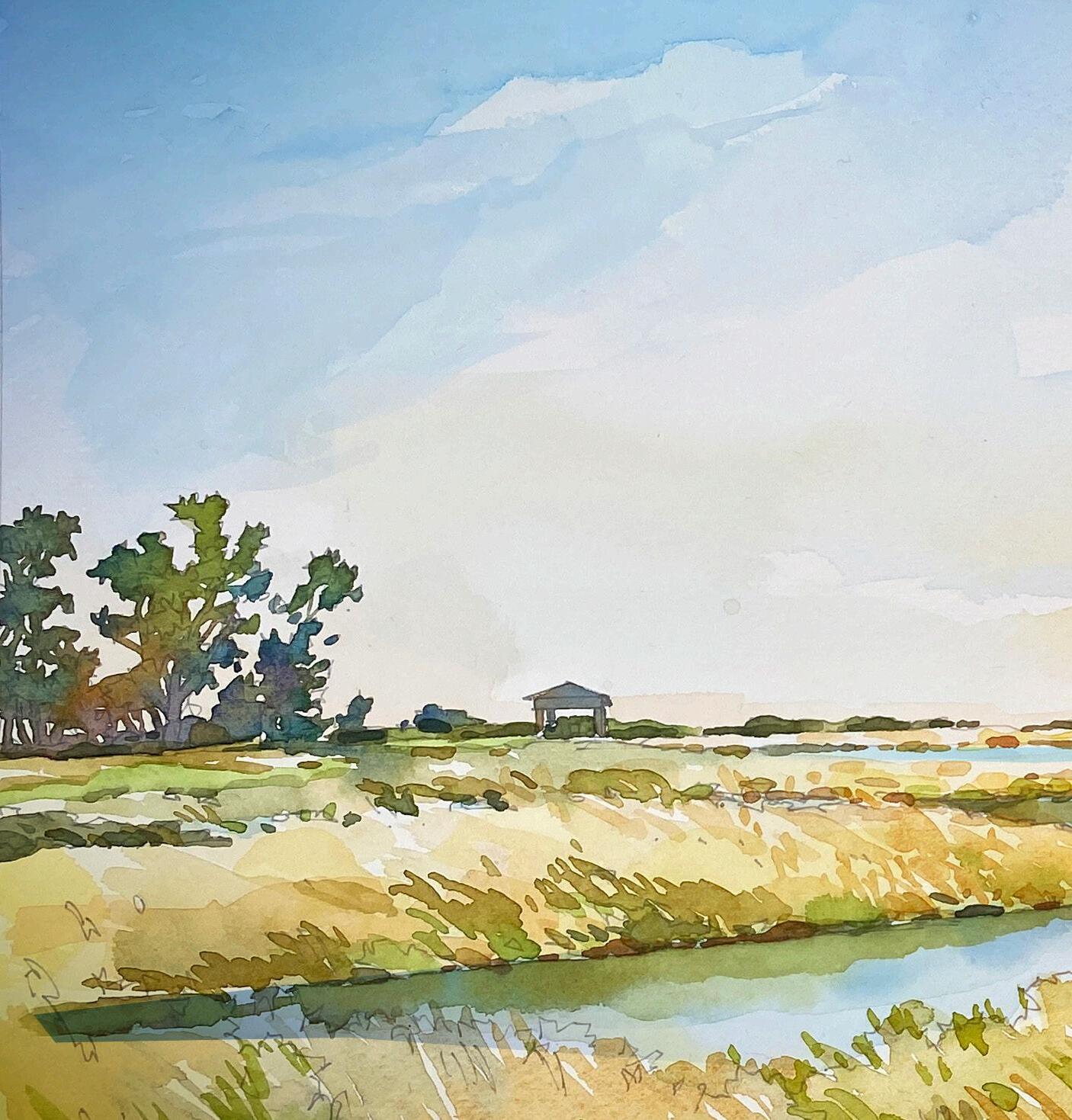
City of Westlake
Town of Vinton
Town of Iowa
Calcasieu Parish School Board
Cameron Parish Port, Harbor, & Terminal District
Chennault International Airport
Lake Charles Housing Authority
McNeese State University
Port of Lake Charles
SOWELA Technical Community College
SWLA Economic Development Alliance
Visit Lake Charles